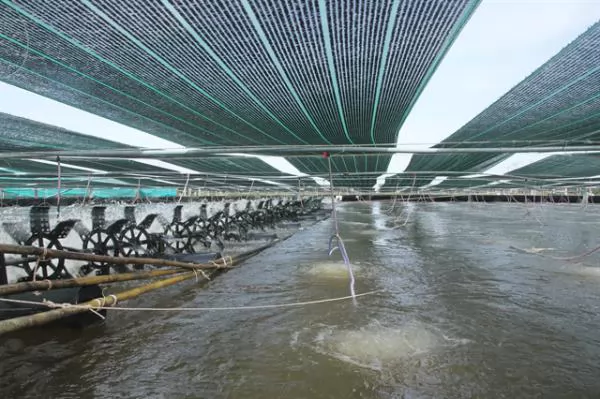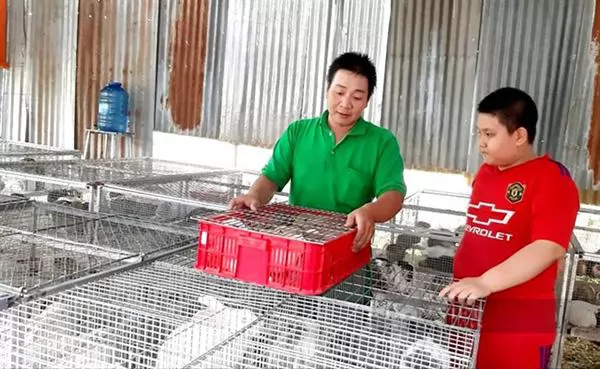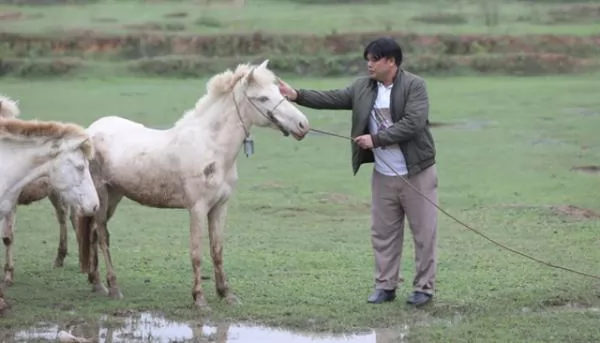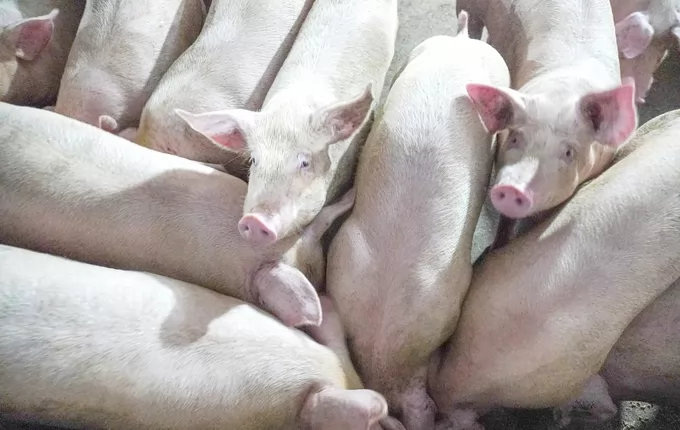Sóc Trăng shrimp farming area to remain unchanged in 2021

Shrimp are bred using advanced farming techniques in Sóc Trăng Province. — VNA/VNS Photo Chanh Đa
SÓC TRĂNG — The Cửu Long (Mekong) Delta province of Sóc Trăng plans to breed brackish water shrimp species in more than 51,000ha of ponds next year, the same as this year.
They will include white-legged shrimp in 35,000ha and black tiger shrimp in the rest of the area.
The coastal province, one of the delta’s largest shrimp producers, has produced nearly 188,000 tonnes of shrimp this year, up 24.8 per cent from last year, according to its Department of Agriculture and Rural Development.
Intensive and semi-intensive farming accounted for 94 per cent of the 51,000ha this year.
The yield is higher this year than average because farmers used advanced techniques and followed the province’s breeding schedules.
Speaking at a seminar held in Sóc Trăng last week, Quách Thị Thanh Bình, deputy head of the Fisheries Sub-department, said brackish water shrimp farming was successful this year because the province managed the breeding schedules well and has many effective farming models.
Trần Văn Lâu, chairman of the province People’s Committee, instructed the Department of Agriculture and Rural Development to develop infrastructure, irrigation and power supply in shrimp farming areas, especially where intensive and semi-intensive farming is carried out, next year.
The province would continue to solicit investment in breeding farms to meet the demand for young brackish water shrimp, he said.
The department should seek to link producers and consumers to sustainably develop shrimp farming and improve farmers’ incomes, he said.
The province has great potential for breeding the crustacean, especially in districts like Trần Đề, Cù Lao Dung and Mỹ Xuyên, where brackish water shrimp are bred using intensive, semi-intensive and other advanced farming models like the two-stage industrial shrimp farming model.
The two-stage model requires various ponds for breeding shrimp like one for a nursery, the main pond and one for treating wastewater. Young shrimp are bred in the nursery pond for a few weeks before being transferred to the main one.
The ponds are equipped with oxygenation facilities, anti-sunlight nets and plastic sheets for covering their beds.
The model requires large initial investment but ensures more than 90 per cent of the animals survive.
According to Lâm Thành Lâm, who has been breeding shrimp in Cù Lao Dung’s An Thạnh 3 Commune for 15 years, after he has received training in using advanced techniques to breed shrimp his yields have increased.
He now breeds white-legged shrimp on an area of 2,500sq.m to Vietnamese good agricultural practices (VietGAP) standards. — VNS
Maybe you are interested

Hopping on the trend: Tiền Giang farmer finds fortune in rabbits
TIỀN GIANG — Đặng Hồng Phúc was one of the first large-scale rabbit breeders in Chợ Gạo District, in the Mekong Delta province of Tiền Giang, turning to them after failing to make ends meet in raising other livestock.

Bắc Giang ethnic groups breed white horses
BẮC GIANG — The ethnic people in mountainous areas of Bắc Giang Province have had better lives in recent years thanks to taking advantage of extensive grazing grounds with abundant food sources to raise white horses.

The 'charm' of raising pigs and earning a fortune with Japfa
Low loss rate, low feed consumption, and fast growth of livestock are factors that help many farms feel secure when raising pigs with Japfa.





